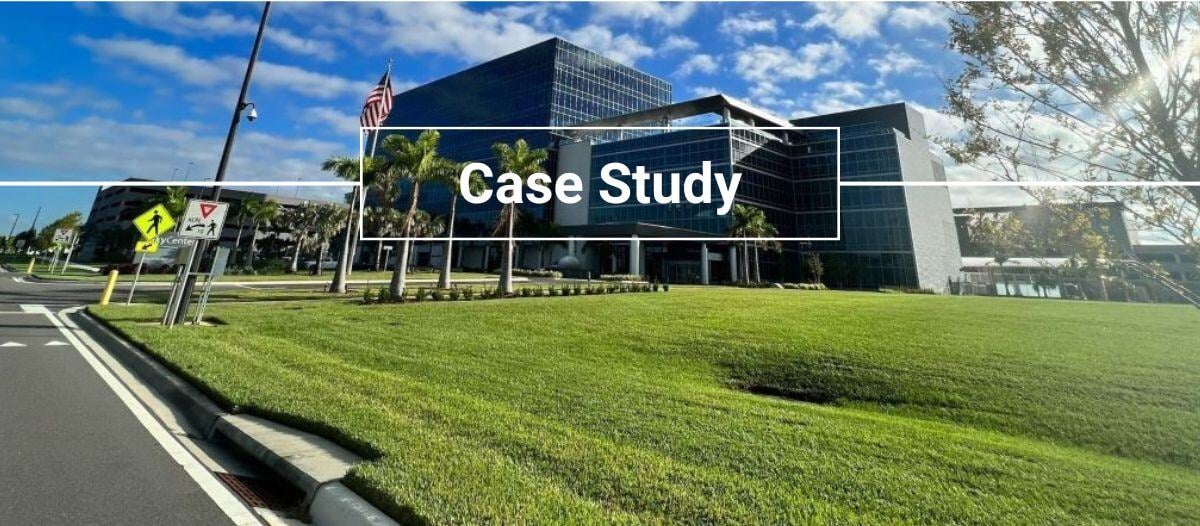The Right Rollout
Inspiring employee trust in tracking systems

And the winner of the telework versus on-site battle is … the hybrid model.
As organizations are implementing their return-to-office strategies, Zippia, a career and jobs website, reported this year that 74 percent of companies in the U.S. alone are using or plan to implement a permanent hybrid work model. That is good news for employees who wish to avoid a daily commute. It is not such good news for FMs, who must figure out ways to accommodate the hybrid schedule while ensuring smooth operations. For many FM teams, tracking systems are helping to support this balance. But there is a caveat: If the systems are not launched with care and consideration, they can create a new set of challenges. There are ways to avoid this scenario.
Background
Several categories of tracking systems have gained popularity in recent years, and they vary in terms of expense and accuracy. The technologies might incorporate cameras, sensors, badges, phone apps or Wi-Fi. Some simply count the number of people who enter, use or exit a space; others compile what is called personally identifiable information (PII). Investopedia defines PII as “information that, when used alone or with other relevant data, can identify an individual. PII may contain direct identifiers (e.g., passport information) that can identify a person uniquely, or quasi-identifiers (e.g., race) that can be combined with other quasi-identifiers (e.g., date of birth) to successfully recognize an individual.”
Fortunately for FM teams, employees are less sensitive about tracking systems than they used to be. Before the COVID-19 pandemic, many employees viewed them as incarnations of Big Brother. But during the pandemic, employees changed their perspective once they realized that tracking systems could help ensure social distancing. Health considerations at the time were paramount.
Another reason that employees are less anxious about tracking is that the technology has pervaded many aspects of daily life beyond work. Most people recognize that when they enter a retail establishment, mall or airport, their presence will be noted. People also appreciate the convenience of tracking: Who could argue against GPS when it is directing drivers away from traffic jams? And who does not appreciate having the records of their past purchases online for easy reordering? In recent years, consumers have been willing to trade their privacy to gain convenience, and that same trend is trickling into the office sphere.
Employee sensitivities
Nevertheless, sensitivities about tracking still exist in the workplace. This is especially true of camera-based technologies and technologies that generate PII. Some employees may fear that such technologies will prompt micromanagement from their supervisors. Others might fear that their employers will track their every move, including monitoring how long they spend in the restroom, whether they arrived late or left early, or if they took a few minutes too long for lunch.
To allay such concerns, FM teams, in conjunction with human resources teams, must err on the side of more rather than less communication. A lack of information fuels rumors. For instance, several years ago a prominent U.K. newspaper placed motion trackers under the desks of its reporters. The motion trackers were intended to monitor usage of energy and space without compiling PII, but the reporters had not “gotten the memo.” Many ripped them out in anger, destroying expensive technology in the process.
Smooth rollouts of tracking systems require FM and HR teams to explain what kind of information an employer is gathering through tracking systems, why the employer is doing so, how that information will be used and what decisions will be determined based on the information.
If employees understand the “why,” they are more likely to support the use of the systems. For example, if employees recognize that real estate is a company’s second highest expense after payroll, then it will make sense to them that their employer wants to make sure that all the budget allotted toward rent is necessary. If half of the office is unused, a substantial portion of the budget is wasted. Any cost savings that stem from space reductions could very well go toward payroll, bonuses, new hires to reduce workloads or improvements in office amenities. It could also save jobs.
Savings can be significant with operational expenses, too. A case in point is a regional office of a large international bank, which instituted a hybrid model with a three-day-per-week in-office requirement. It turned out that hardly anyone showed up on Fridays, so eventually the office closed completely on Fridays. That saved money on HVAC, lighting and other operational costs. Again, these savings could be put toward other purposes – purposes that employees are likely to support.
Employees are also likely to support tracking that guarantees them a desk on any given day. If an employer tracks the number of people who use an office, then the employer can adjust space requirements as needed. The employer would not give up more space than necessary and might even lease more space to avoid overcrowding.
Tracking also enables experimentation. Are more people coming in on days when a special event such as a seminar, staff meeting or holiday celebration is held? Are departmental employees coming in on the same days? Anecdotal evidence suggests that employees are less interested in free breakfasts or special events than making sure the team members with whom they collaborate share the same hybrid schedules. All this information is valuable for event- and space-planning, budgetary decisions and employee satisfaction. Here is yet another rationale FM and HR teams can relay to employees, whose understanding will promote acceptance.
The sharing of information can exert a powerful influence on employee support for rollouts of tracking systems. It is equally clear that FM teams and HR must partner on the information sharing. HR can provide the “why,” and FM can provide the “how.” Silos must be avoided: the two practices are inextricably linked.
Legal considerations
It is smart to get legal teams involved in rollouts, especially when tracking systems are compiling PII. Employee sensitivities are not the only concern; compliance with privacy laws is another. Fortunately, employers have come a long way in this area. Multinationals tend to default to the standards of the country with the strictest requirements among the nations where they have a presence. This is the safest course of action. What is notable about the legal considerations is that they closely mirror the considerations of employee sensitivities. Many of the privacy laws around the world require that companies disclose to people whose data they are collecting, what is being collected, why the companies are collecting it and how the companies will use it. Sound familiar? This is yet another reason to give legal teams the opportunity to advise and collaborate with FM and HR teams on messaging.
Communication is key
Many companies have adopted the hybrid model, but it is not all smooth sailing yet. Tracking systems are helping them determine the right schedules and policies and make sound decisions about their real estate. Yet it is risky for employers to assume that their employees understand this. The more communication, the better. If FM, HR and legal teams effectively convey what, why and how, it is likely that employees will believe their employer is on the right track.

Craig Gillespie is the CEO of Airtower Networks. He has been active in the real estate and facilities management markets for more than 20 years, specializing in technology and services. Before joining Airtower, he served as managing director of MRI Software's Occupier division. Previously, Gillespie was the CEO of Manhattan Software.
References
zippia.com/advice/hybrid-work-statistics
Read more on Communication , Technology and Occupancy & Human Factors
Explore All FMJ Topics









